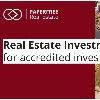PAPERFREE
commercial hard money financing
FREE CONSULTATION
Non institutional lenders are taking the center stage
Entrepreneurs and investors have access to a wide range of opportunities through non-traditional lenders.last updated Wednesday, November 19, 2025
#Private Lending #Due Diligence
| | by John Burson |

QUICK LINKS
AD
Get Access to Hard Money Capital by Asset Types
The last decade has witnessed an evolution in real estate investor financing. Private lenders often operate behind the scenes and are among the leading players in the silent revolution. The Great Recession largely catapulted their prominence in financial circles.
Following the economic downturn, the biggest challenge for investors was the imposition of new, stricter regulations by traditional lending institutions. These included rules such as the Dodd-Frank Wall Street Reform and Consumer Protection Act in the U.S., as well as laws affecting global banking, including the Basel III accords and industry regulations.
The result is that today, banks have less money to invest in commercial real estate, fueling the rise of a new marketplace. Alternative funding provides new funding for commercial mortgage brokers.
New Institutions
Changes in commercial real estate result from traditional financial institutions' new opportunities to invest their capital. These individuals work with non-bank lenders who determine how funds are disbursed. The lenders pool their resources, which can amount to billions of dollars.
These private lenders do not face the same risk-taking limitations as banks, allowing them to access a diverse range of opportunities. The funds come from multiple sources, thereby limiting an individual's financial risk.
The revolution has its limitations. In its early years, private lending faced reputational challenges when dishonest lenders charged upfront fees and either disappeared or denied the loan due to inadequate "due diligence." Borrowers also feel that paying due diligence fees guarantees them a loan. Such fees are equivalent to appraisal fees and are required for valuation.
Many borrowers today still follow outdated practices, expecting to access loans without paying any fees. This was previously possible because banks required borrowers to open accounts, creating long-term business relationships for the banks and providing insurance from the Federal Deposit Insurance Corporation (FDIC). In the worst-case scenarios, the government would step in to bail out the banks.
Available Options
Brokers can successfully onboard clients by first presenting the best financing options available. The process can begin immediately if both parties have all the necessary information. To prepare for any unexpected issues, the broker should have backup financing options ready for the borrower. It’s advisable to present these options before meeting with the lender to minimize any obstacles that borrowers may encounter throughout the lending process.
The new generation of non-bank lenders offers a wide range of loans, services, arrangements, and combinations that are similar to those of traditional banks. They offer a 90% loan-to-cost financing option and typically require minimal cash outlays, ensuring borrowers retain ownership of their property.
Commercial real estate deals can access a range of financing options, including well-prepared venture capital projects. As financing from non-traditional lenders increases, alternative lending is becoming an increasingly permanent fixture in the market, particularly for real estate investments.
Free Consultation
Search within Paperfree.com
Similar Pages
- How do I Use Hard Money Loans to Fund Real Estate

- 3 trends in Commercial Real Estate

- What Hard Money Lenders Will Never Tell You

- What are your Exit Options when Applying for a Hard money Loan

- Loan Foreclosure Ambiguities

- How Will a Rise in Interest Rates Affect Real Estate Investors

- What You Need To Know About Leveraged Loans

- Invest in real estate. Real estate investment opportunities to build smart investment portfolio by Paperfree.com

Popular
Benefits of the EB-5 Visa Program | Guide
Search within Paperfree.com
